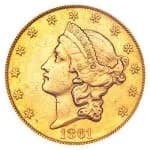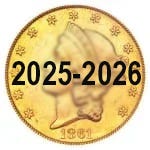Attempting to Become Famous, Metal Detectorist Buried Coins He Purchased On eBay, Nearly Altering History.
Had the finding been genuine, it would have changed the history of Wales.
Michael Jones, 64, of Port Talbot, allegedly placed five medieval “Crusader” coins in a field and reported finding them during a metal-detecting rally at Oatcroft Farm in Titley in July 2021. He was brought before the Hereford magistrates’ court on March 11, 2024, and charged with one count of fraud by false representation. Jones had paid £200 ($250) on eBay for the silver deniers.
The silver Deniers of Bohemond III were struck at Antioch in the twelfth century during the reign of Prince Bohemond. During the Great Crusades, the prince drove the Turks from Antioch (modern-day Southeast Turkey). The deniers of the long-lived Bohemond III, whose reign lasted from 1144 to 1201 AD, are relatively common in the marketplace because of the duration of his rule. They feature a knight in chainmail and a helmet.
According to archeologists, had the coin find been confirmed, the discovery would have changed the history of the Herefordshire and Welsh borders. Archaeologist and former Finds Liaison Officer for the county told the court, “They [the coins] are very rare [in the region] and very important, especially if they could be linked to the Knights Templar. Such coins have never been found in the region before.”
Adrian Harris, another metal detectorist at the rally, told the court that Jones had led him to a section of the farm where he had quickly located and dug up the coins. Harris said, “I was ecstatic, jumping up and down, “but Mike wasn’t really shocked.” However, when he announced his findings to the rest of the attendees, they became suspicious when no other artifacts were discovered in the field.
One of the participants looked at sold listings for similar coins on eBay and found that one featuring this specific type of coin had recently been sold on the platform. Authorities contacted the seller, who confirmed that the listing matched the exact weight and coin type of Jones’ alleged finding.
Jones recently appeared in the magistrates’ court after entering a plea of not guilty to the charge of fraud by false representation in July 2023. He explained to the court that he had faked the find “for the fame and bravado that goes with it,” adding, “It was stupid, I know. It was a feel-good thing. I just wanted to make myself look good. It was a moment of insanity.”
The court declined to indict Jones on the charge, stating that there was no proof that he intended to benefit financially from the fraudulent discovery. They subsequently dismissed the charge. Sue Furnival, the chairwoman of the magistrates, told Jones, “You did make false representations, but the crown could not prove financial gain, therefore we find you not guilty.”
An archeological source told The Times that the council paid for an excavation of the find site to see if any other artifacts could be found. “His claim of discovery cost money in investigations and court time,” the source said, describing the verdict as “disappointing.”
You may also like:



